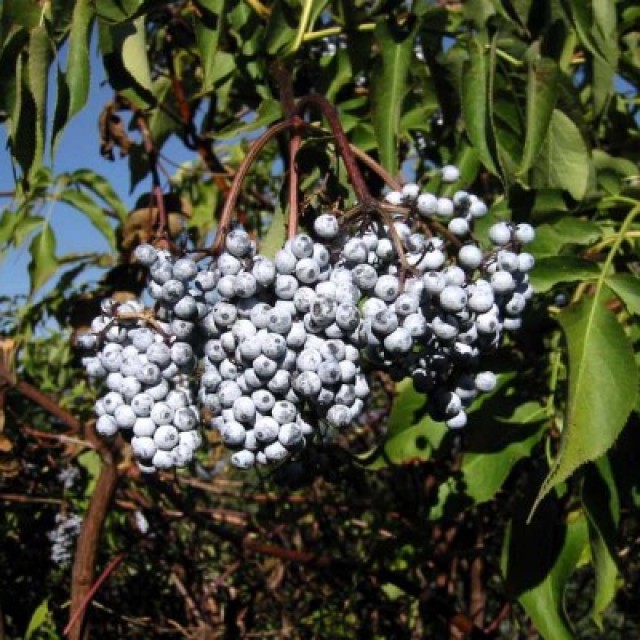COMMON NAME
Blue elderberry
SCIENTIFIC NAME
Sambucus mexicana
Plant family
(Viburnaceae)
Plant group
Deciduous Trees and Shrubs
A large rounded evergreen shrub that has compound leaves with 3-5 pairs of long elliptical leaflets. The small 5-petaled white flowers are arranged into a conspicuous, dense, flat-topped cluster located on terminal branches. Each flower develops into a dark-blue to black fruit (a drupe) that is reminiscent of a tiny tomato. Fruits are generally covered with a wax or resin that gives them a bluish color.
132 reports
32+
OBSERVERS
132+
OBSERVATIONS
Identification hints
Elderberries are distinctive in being woody shrubs with large pointed deciduous leaves which are divided into many pairs of leaflets, with one at the very end of the leaf, a strong smell, especially when damaged, and large clusters of berries at the top of the main branches. The 3 California species of Sambucus are most easily distinguished by their fruits. Blue elderberry is distinctive in having black fruits with a bluish-white coating (a bloom). The other species have either purple, black or red berries, and tend to occur in cooler and more moist areas in the mountains.
Did you know?
The name Sambucus alludes to a stringed musical instrument in ancient Greece made from the wood of plants in this genus. In more recent times, the Chumash of Southern California used the lightweight hollow branches for clapper sticks - partially split branches that were hit against the hand to make a loud clapping sound that kept rhythm in the absence of drums. Although many agree the fruits are not delicious on their own, they are commonly harvested to make Elderberry jam and wine. Flowers are often used to make a sweet drink as well. Note that botanists now place several of these similar looking elderberries (Sambucus caerulea, S. mexicana, and S. canadensis) into one species, black elderberry which also occurs in Europe (Sambucus nigra).
DISTRIBUTION IN TH U.S.
Arizona
,
California
,
Colorado
,
Idaho
,
Montana
,
New Mexico
,
Nevada
,
Oregon
,
Texas
,
Utah
,
Washington
,
Wyoming
HABITAT
There is no information available about this species.
See Menu
Budburst is a project of the
Chicago Botanic Garden
One of the treasures of the
Forest Preserves of Cook County
Creative Commons
BY-NC-SA 4.0
- 2021 Chicago Botanic Garden. All Rights Reserved.
- Terms of Use
- Privacy Policy
- Data Sharing and Citation Policies
- 2021 Chicago Botanic Garden. All Rights Reserved.



